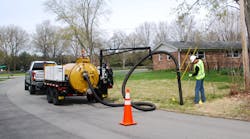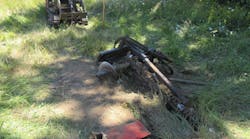Lexington Utilities has embarked on a 42-mile expansion of its natural gas pipeline in Lexington, N.C. It is one of the largest expansions in the city's history.
A recent challenge on the job has been a 1,000-foot bore through 45,000-psi rock underneath Swearing Creek, which is part of High Rock Lake. General contractor Loftis Construction Corp. has brought in Newton, Mississippi-based Delta Directional to tackle the job.
According to Allen Casstevens, natural gas engineer and project manager with Lexington Utilities, a division of the city of Lexington, test bores indicated sand and a weathered rock mix right below the creek bed. Below that was solid rock. In order to avoid fraccing out into the creek, drilling operations for the new pipeline would have to go through the rock.
From grade, Delta Directional has drilled down approximately 70 feet deep, which is 25 feet to 30 feet below the creek bottom. Delta Directional is using a new Vermeer D100x120 Series II horizontal directional drill with 3-inch-diameter rods and a 6-3/4-inch-diameter drill bit. The project calls for 4-inch-diameter pipe. They are using an environmentally friendly bentonite mud mix, which is being recycled for continuous use on the job. A wire line system attached to the drill head relays depth and location information back to a computer.
Because of the psi of the rock, progress has averaged about 60 feet day, according to Taylor Monroe, project superintendent with Delta Directional. The pace has been steady, however, and no other complications have been encountered on the bore, which is expected to take two weeks to complete.




